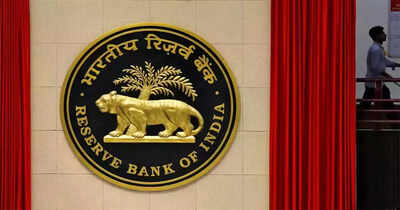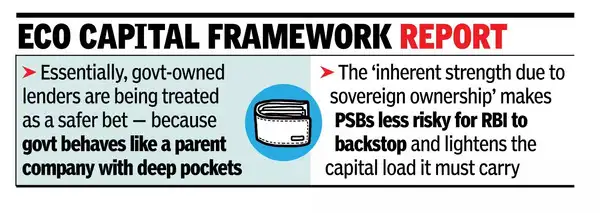
MUMBAI: RBI has acknowledged that government’s ownership of public sector banks makes its risk management job easier. In its latest economic capital framework report, RBI notes that such ownership has “demonstrably reduced the potential losses” it might face when offering emergency liquidity assistance (ELA), warranting lower capital buffers for these entities.In other words, govt-owned lenders are being treated as a safer bet – because govt behaves like a parent company with deep pockets. The “inherent strength due to sovereign ownership” makes public banks less risky for RBI to backstop and lightens the capital load it must carry to do so.“The present review proposes to account for the inherent strength due to sovereign ownership in case of PSBs, while assessing the recovery rates,” the report states. This approach is justified, RBI argues, by govt’s track record: “Govt had infused an amount of more than Rs 3.1 lakh crore as capital during the period since RBI’s asset quality review.”

The capital infusion has helped bring down non-performing assets in the banking sector from a high of 9.3% (12.6% for PSBs) in March 2019 to a multi-year low of 2.6% (3.3% for PSBs) in Sept 2024.RBI noted that “the expert committee had estimated potential LOLR (lender of last resort) losses for RBI based on uniform recovery rate of 80 % on ELA against non-hiqh quality liquid assets collateral for both private and public sector banks”. However, the current review departs from this.This backing translates into tangible regulatory leniency. “Accordingly, the potential LOLR losses of RBI for the quantum of loans extended to PSBs have been assumed to be lower (10%) as compared to private sector banks (20%),” the report says – halving the assumed loss thanks to the implicit state guarantee. The resulting stress-test estimates suggest that , even under duress, RBI would face potential losses of just about 3% of its balance sheet, assuming recovery rates of 90% for PSBs and 80% for private banks.The report also notes that given the global operations of scheduled commercial banks, the possibility of RBI having to provide liquidity in foreign currency to overseas branches of such lenders in periods of stress, with tightening of counterparty credit lines and widening of spreads, may not be ruled out.














